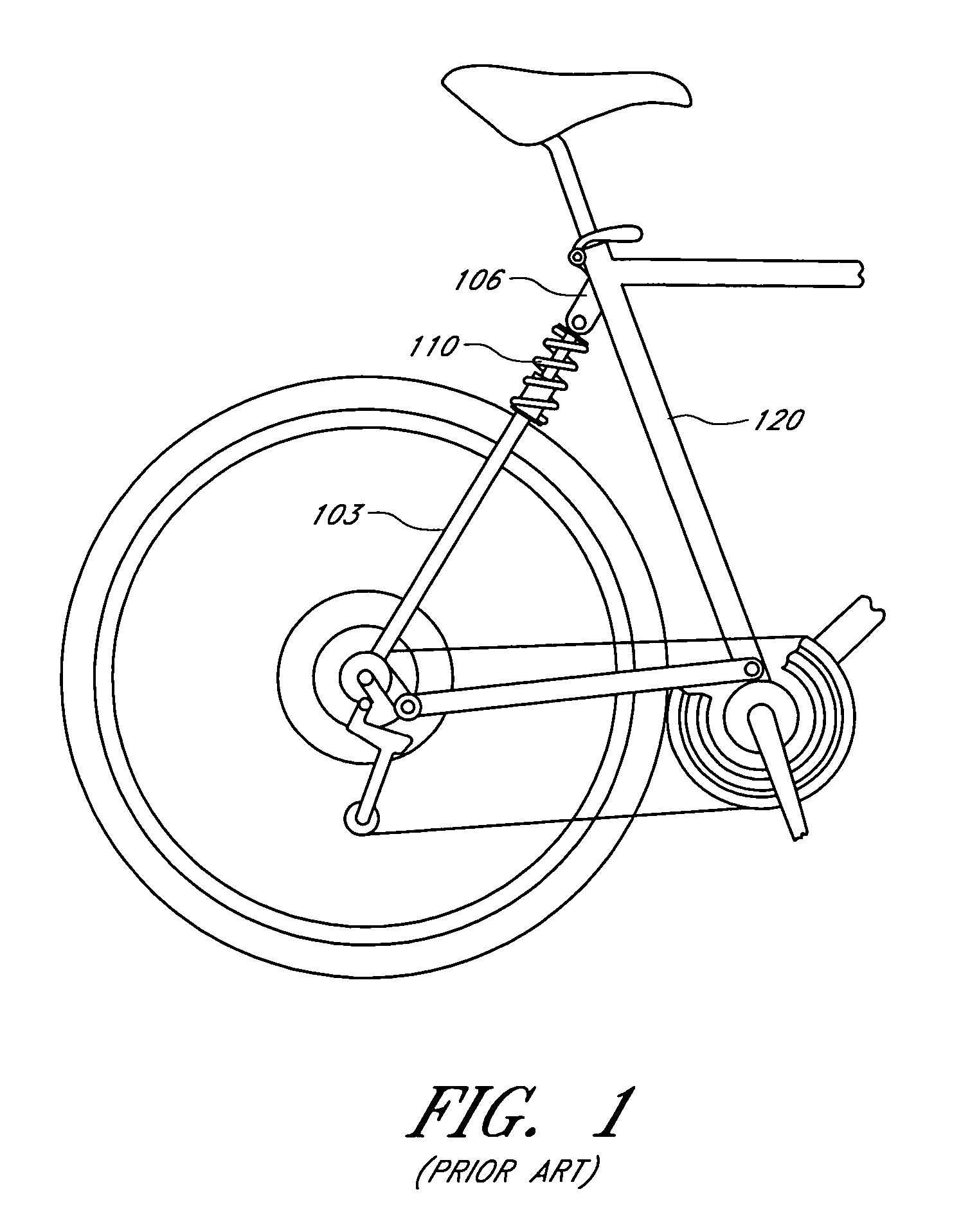Bicycle damping enhancement system
a technology for enhancing systems and bicycles, which is applied in the direction of shock absorbers, cycle equipment, cycles, etc., can solve the problems of inability to provide automatic adjustment of shock absorber settings, conventional shock absorbers configured with fixed damping rate, and used shock absorbers
- Summary
- Abstract
- Description
- Claims
- Application Information
AI Technical Summary
Benefits of technology
Problems solved by technology
Method used
Image
Examples
Embodiment Construction
[0025]A damping enhancement system is described which differentiates between upward forces produced by the contact of the bicycle wheel with the terrain and downward forces produced by the movement of the rider's mass. In the following description, for the purposes of explanation, numerous specific details are set forth in order to provide a thorough understanding of the present invention. It will be apparent, however, to one of ordinary skill in the art that the present invention may be practiced without some of these specific details. In other instances, certain well-known structures are illustrated and described in limited detail to avoid obscuring the underlying principles of the present invention.
An Embodiment of the Damper Enhancement System
[0026]One embodiment of the present damper enhancement system is illustrated in FIG. 3. The apparatus is comprised generally of a primary tube 302 and a remote tube 304 coupled via a connector hose 306.
[0027]The damper enhancement system de...
PUM
 Login to View More
Login to View More Abstract
Description
Claims
Application Information
 Login to View More
Login to View More - R&D
- Intellectual Property
- Life Sciences
- Materials
- Tech Scout
- Unparalleled Data Quality
- Higher Quality Content
- 60% Fewer Hallucinations
Browse by: Latest US Patents, China's latest patents, Technical Efficacy Thesaurus, Application Domain, Technology Topic, Popular Technical Reports.
© 2025 PatSnap. All rights reserved.Legal|Privacy policy|Modern Slavery Act Transparency Statement|Sitemap|About US| Contact US: help@patsnap.com



